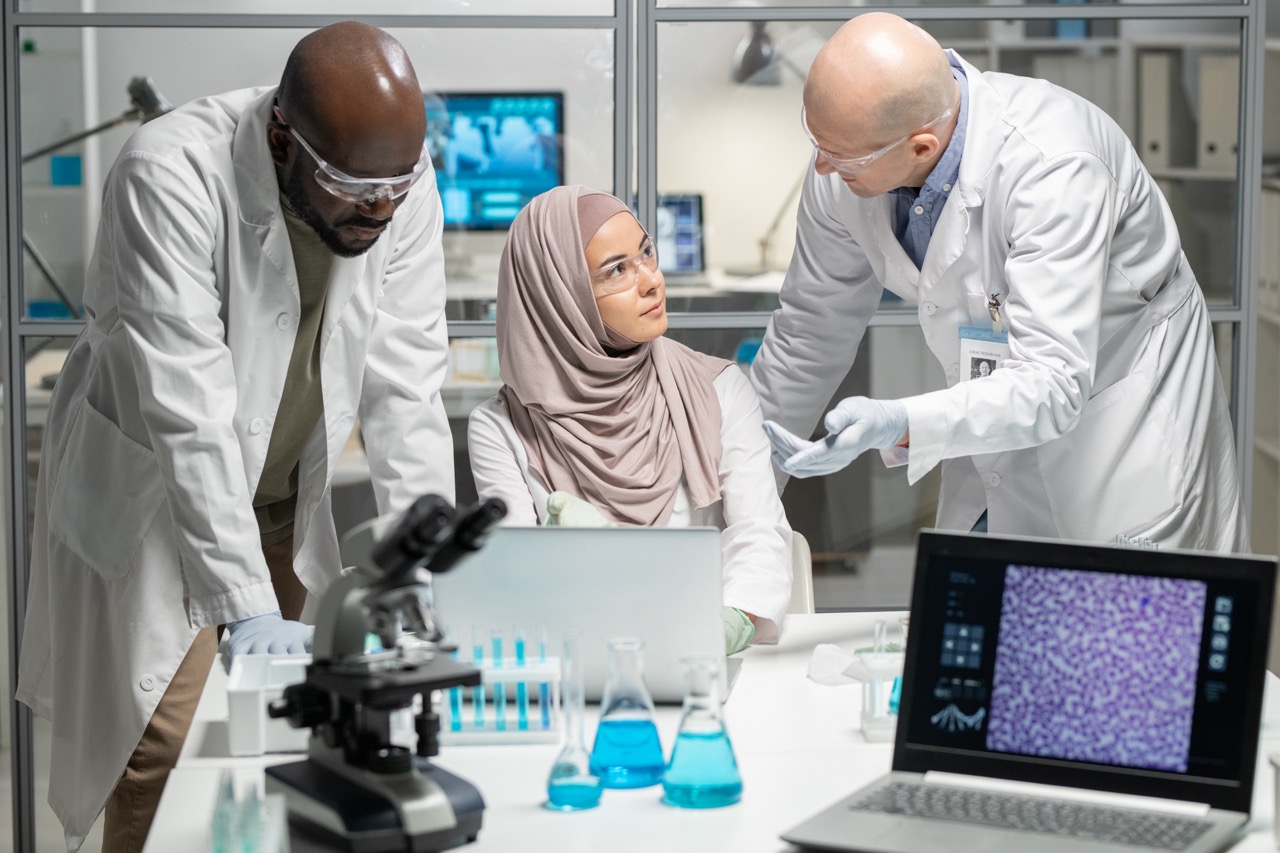Enantioselective catalysis has emerged as a cornerstone of modern organic chemistry, enabling the synthesis of chiral molecules with high precision and efficiency. The ability to selectively produce one enantiomer over another is critical in various fields, particularly in pharmaceuticals, where the biological activity of compounds often hinges on their stereochemistry. Among the prominent figures in this domain, Professor David MacMillan has significantly advanced the methodology of enantioselective catalysis through the innovative application of organocatalysis and related techniques. This article will explore the contributions of MacMillan’s laboratory to the field, highlighting key innovations, notable reactions, and future directions that promise to shape the landscape of organic synthesis.
Overview of Enantioselective Catalysis in Modern Chemistry
Enantioselective catalysis refers to the preferential formation of one enantiomer over another in a chemical reaction. This process is critical in the synthesis of chiral compounds, which are ubiquitous in nature and play vital roles in biological systems. The quest for enantioselectivity has led to the development of various catalytic strategies, including the use of metal catalysts, enzyme-catalyzed reactions, and, more recently, organocatalysts—small organic molecules that facilitate reactions without the need for metallic components. This diversity in catalytic approaches allows chemists to tailor their methods to specific substrates and reactions, increasing the toolkit available for organic synthesis.
The significance of enantioselective catalysis extends beyond synthetic chemistry; it has profound implications for the pharmaceutical industry, where the efficacy and safety of drugs are often dependent on their stereochemical configuration. For instance, one enantiomer of a drug may be therapeutically active, while the other could be inert or even harmful. As such, the ability to produce enantiopure substances not only enhances the effectiveness of medicinal chemistry but also aligns with the growing demand for sustainable and environmentally friendly processes in chemical manufacturing.
In recent years, the development of enantioselective methods has been propelled by advances in reaction mechanism understanding and catalyst design. The emergence of new classes of catalysts, such as those pioneered by MacMillan’s lab, has expanded the scope and efficiency of enantioselective reactions. This progress has opened new avenues for the synthesis of complex natural products and bioactive molecules, solidifying the role of enantioselective catalysis as an indispensable aspect of modern chemical research.
Key Innovations from David MacMillan’s Research Group
David MacMillan’s laboratory has been at the forefront of enantioselective catalysis innovations, particularly through the pioneering work in organocatalysis. One of the lab’s most notable contributions is the development of asymmetric organocatalysis, which employs small organic molecules as catalysts to achieve enantioselective transformations. This approach has proven advantageous due to its simplicity, mild reaction conditions, and the ability to use readily available starting materials. MacMillan’s introduction of the concept of "catalytic asymmetric reactions" has fundamentally altered chemists’ perspectives on how to achieve enantioselectivity without metal catalysts.
MacMillan and his team have also explored various reaction mechanisms that facilitate enantioselective outcomes. For instance, they have uncovered innovative processes such as the use of dual catalysis, which involves the simultaneous activation of both the substrate and a co-catalyst to enhance the selectivity of the reaction. This strategy has significantly broadened the range of reactions that can be performed enantioselectively, including challenging transformations that were previously considered difficult or impossible. The lab’s research continues to inspire further exploration and optimization of organocatalytic systems, demonstrating the versatility and robustness of these methodologies.
Moreover, the MacMillan lab has contributed to the development of novel catalytic strategies that incorporate new functionalities into traditional substrates, opening doors to previously unexplored chemical territories. Their findings have led to the creation of new classes of enantioselective reactions, including those that enable complex molecule synthesis with high efficiency. This forward-thinking approach has not only pushed the boundaries of what is possible in organic synthesis but has also encouraged other researchers to adopt similar strategies in their work.
Notable Reactions and Their Impact on Organic Synthesis
Among the myriad of reactions developed by MacMillan’s lab, one of the most impactful is the use of asymmetric Diels-Alder reactions. This reaction allows for the efficient construction of cyclic structures with defined stereochemistry, which are fundamental components of many natural products and pharmaceuticals. MacMillan’s optimization of this reaction using organocatalysts has refined the process, enabling chemists to achieve high levels of enantioselectivity and yield in a variety of substrates. As a result, the asymmetric Diels-Alder reaction has become a valuable tool in the arsenal of synthetic organic chemists.
Another noteworthy contribution is the development of enantioselective α-alkylation of aldehydes. This reaction, facilitated by organocatalysts, allows for the introduction of alkyl groups into aldehyde substrates with excellent enantioselectivity. The significance of this reaction lies in its ability to create complex, chiral molecules from simple starting materials, streamlining the synthesis of various pharmaceuticals and functional materials. The methodology has been adopted widely within the field, showcasing how MacMillan’s innovations have made a lasting impact on organic synthesis practices.
Furthermore, MacMillan’s work on the development of iminium ion catalysis has opened new pathways for enantioselective transformations, particularly in the context of synthesizing amines and other nitrogen-containing compounds. This approach capitalizes on the reactivity of iminium ions to drive reactions that would otherwise be challenging to achieve under conventional conditions. The implications of these catalytic methods are significant, as they contribute to more efficient and sustainable synthesis processes, fulfilling the increasing demand for complex molecules in various applications, including pharmaceuticals and agrochemicals.
Future Directions and Implications for Enantioselective Methods
The future of enantioselective catalysis is poised for exciting developments, particularly as researchers continue to explore and refine organocatalytic methodologies. MacMillan’s contributions have laid the groundwork for the incorporation of new techniques and technologies, such as machine learning and artificial intelligence, to optimize reaction conditions and predict outcomes. These advancements can lead to the discovery of novel catalysts and reactions that may not have been previously considered, further enhancing the efficiency and scope of enantioselective methods.
Moreover, the integration of green chemistry principles into enantioselective catalysis is an area ripe for exploration. With growing awareness of environmental sustainability, the development of catalysts that operate under mild conditions with minimal waste will be crucial. MacMillan’s lab has already made strides in this direction, and future research efforts will likely focus on creating more sustainable catalytic systems while maintaining high levels of enantioselectivity and yield. This shift would not only improve the environmental footprint of chemical processes but also align with regulatory trends emphasizing sustainability in chemistry.
Finally, the implications of these developments extend beyond the lab, with potential applications in pharmaceutical manufacturing and materials science. As enantioselective methods become more efficient and accessible, they can facilitate the discovery and production of new drugs with improved efficacy and reduced side effects. Additionally, advancements in catalysis may lead to innovations in the synthesis of complex materials that possess unique properties, thus influencing a wide array of fields from medicine to nanotechnology. The continued evolution of enantioselective catalysis holds great promise for the future of chemistry, driven by the foundational contributions of researchers like David MacMillan.
In summary, David MacMillan’s lab has made significant contributions to the field of enantioselective catalysis, advancing methodologies that are now integral to organic synthesis. Through innovative approaches in organocatalysis, the development of notable reactions, and a forward-looking perspective on sustainability and technology integration, MacMillan’s work has influenced both current practices and future directions in the field. As research continues to evolve, the impact of these contributions will likely resonate across multiple disciplines, underscoring the importance of enantioselective catalysis in modern chemistry and its applications in real-world challenges.










